Italian Expat Photographer Documents Brooklynites on Their Stoops During Pandemic
“The stoops allow for socializing — at a 6-foot distance — and some kind of community building,” writer and photographer Francesca Magnani told Brownstoner.

Friends catch up, keeping the distance, Brooklyn, April 4, 2020
The photographs of people on the street Francesca Magnani takes every day document how New Yorkers have been coping with the virus. Originally from Padua, Italy, the writer and photographer has been living in Brooklyn for more than 15 years, and her work has been featured in a solo show at Photoville and many publications, including Brownstoner.
Masks appear in early March, scenes shift to the outdoors, and the streets of the city gradually empty of people, the photos and videos Magnani posts daily on Instagram show.
Around the time Cuomo mandated the shutdown in New York, Magnani started a photo series called “On the Stoop” that reflects how people in Cobble Hill and Prospect Heights have been using their stoops during the crisis. “Stoops have become an extension of the indoor living space,” Magnani told Brownstoner. “The stoops allow for socializing — at a 6-foot distance — and some kind of community building.”
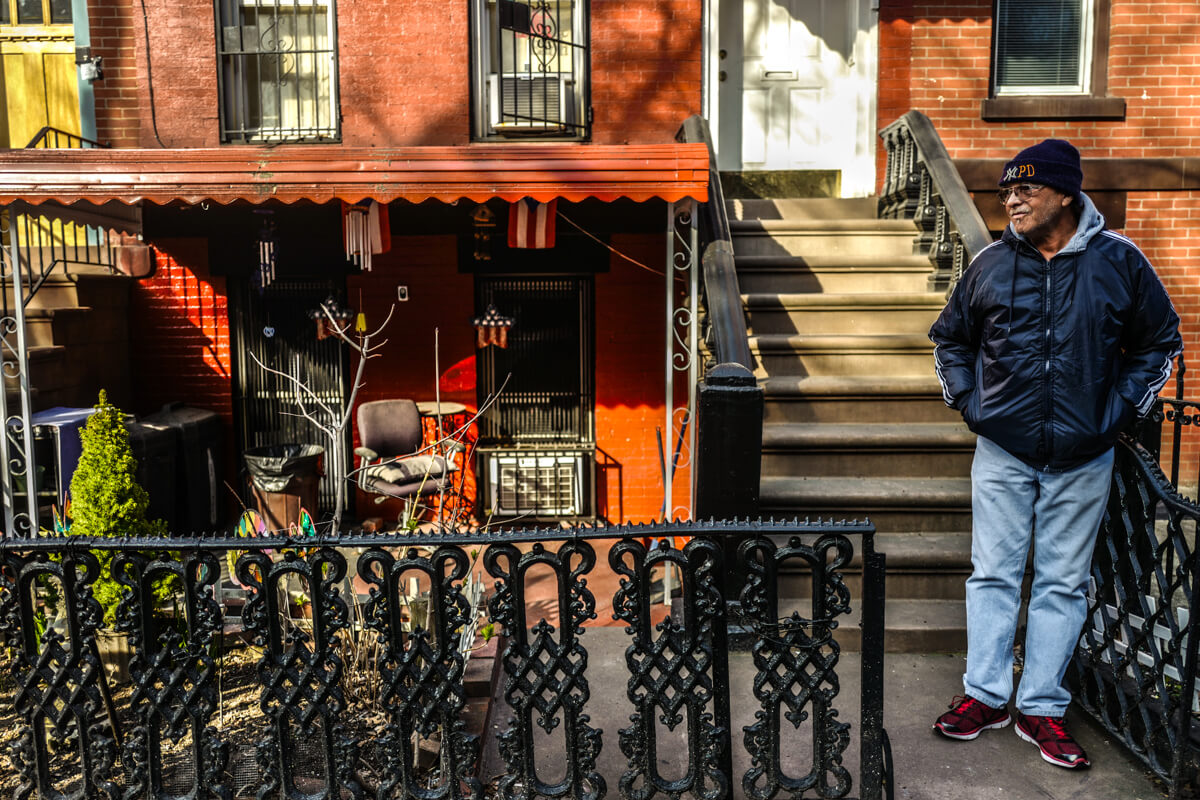
What made you decide to pursue this particular project?
I think and figure out the world around me and also my feelings through walking at a given hour and the people and colors and light I encounter. I started the project the minute I exchanged a look and slight nod on his part with a man who was sitting outside. That afternoon Cuomo had announced that the pause would start in two days, and because I was photographing the anxiety building up in New Yorkers and myself for weeks, I had just decided to limit my time on the subway, and explore the neighborhood more. On March 20th I realized people were sitting out not only because the day was nice, but also because it was now officially advisable not to leave one’s home. Being Italian, I had already heard various more advanced phases of the pandemic restrictions, and during those weeks I was wondering which of the limitations Italians were subjected to would be applied in New York.
So this series, like all my stories, originated during my walks and not from an intellectual concept. There are many photo essays nowadays that explore empty streets, hospital tragic scenes or home intimacy images. I am committed to sharing what appears in front of my lens and highlighting aspects of the pandemic that have not been told yet. And as a street photographer, I like it that the hidden comes out to my view.
What is your process? Do you talk to the people you photograph?
For this particular project, as I have to stop my walk and take a stance in front of someone, I do exchange a few words and ask permission to photograph. Usually people do not mind being portrayed there and are amused by the request. My strong Italian accent is also a conversation starter.
Also, I like to give people the image I take, and I often write down their email or instagram account. If someone does not want to be photographed I have learned not to take it personally, and in New York, the moment you avert your gaze, chances are you run into a scene even more appealing. However, I am always grateful when someone allows me to photograph them on the street because the image then goes to reflect something that was not yet expressed in myself. I spent several years printing in a darkroom — at the New School when there used to be one, at ICP, and at The Print Space — from 1999 to 2007 and I have retained that sense of looking back at the images, in retrospect as it happens in the darkness on photographic paper. Even if I now shoot digital, I maintain that sense of discovery, surprise and revelation. I get to see what is out there that also resonates with my inner self.
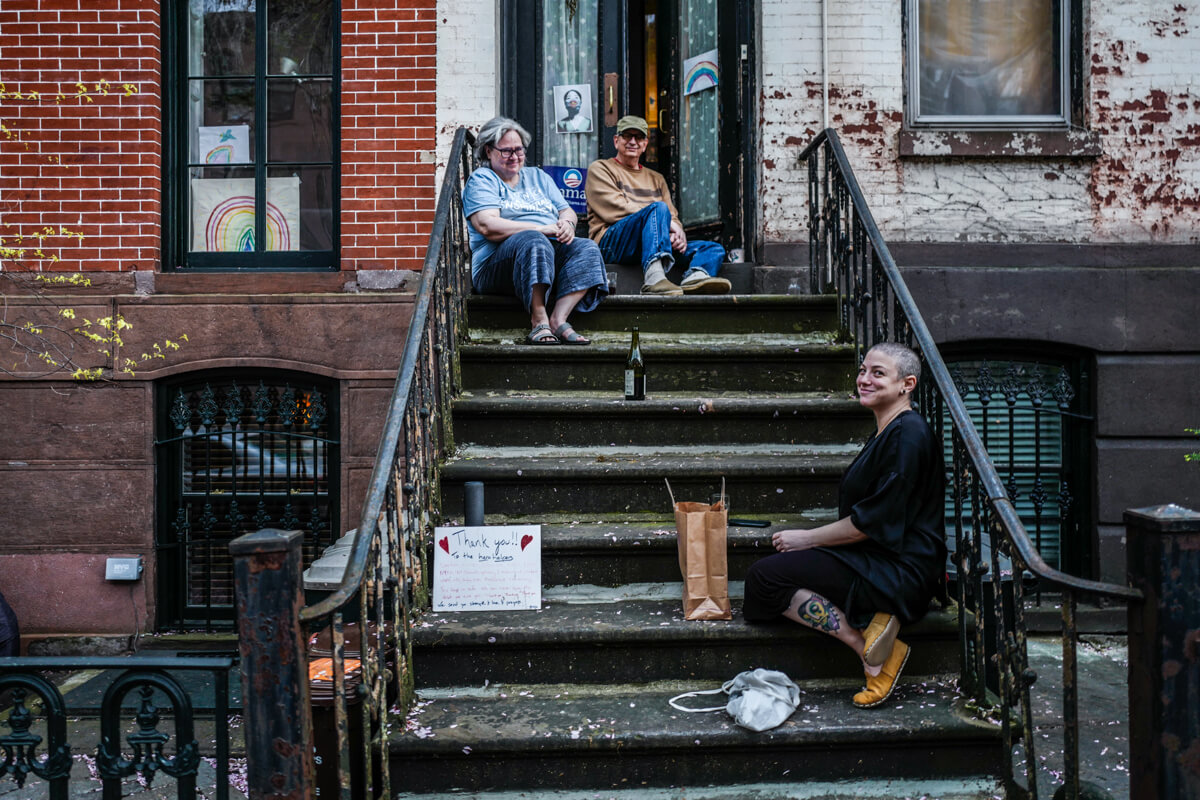
Why or how did you pick Cobble Hill and Prospect Heights?
It is only a few months that I live in this part of Brooklyn and the stoops had already fascinated me as a place where people leave items — casually but systematically — books, utensils, clothes, in some kind of market and display, and as an offering/exchange/barter with the street. Also, in October I had photographed some Halloween displays and in general I like the way stoops can be used and made to look as a stage. Previously I was in Williamsburg for over a decade, and I think that the fact that this is the first spring I wake up every morning in these streets has made me look at them with marveled eyes.
Why stoops? What did you discover?
Now that the streets have emptied, stoops have become an extension of the indoor living space. The stoops allow for socialization — at a 6-foot distance — and some kind of community building. Being Italian, the steps remind me of the function balconies have in my home country at this time. The stoop is a hybrid of public and private, of inside and outside. It is a NYC staple, and right now it presents a solution to housebound Brooklynites. People are there talking, sharing a bottle of wine, playing with their kids, working with their laptops, exercising, reading, studying, talking on their phone, chatting with their neighbors, having Easter day lunch, playing the guitar while a daughter dances… If it were summer, life on the stoops would not be surprising, but because people are living in isolation these scenes stood out to me.
Photography is also very much an internal process, and I understand my thoughts and emotions better when I look back at my images. I have discovered that Jonathan Lethem writes extensively about one of the very blocks I photograph, Dean between Hoyt and Nevins, and reading his novel “The Fortress of Solitude,” I have found a quote that I feel can partly describe my series, the eyes of the people I have engaged with my lens, and my process: “Gaze long enough into Dean Street and Dean Street will gaze into you.”
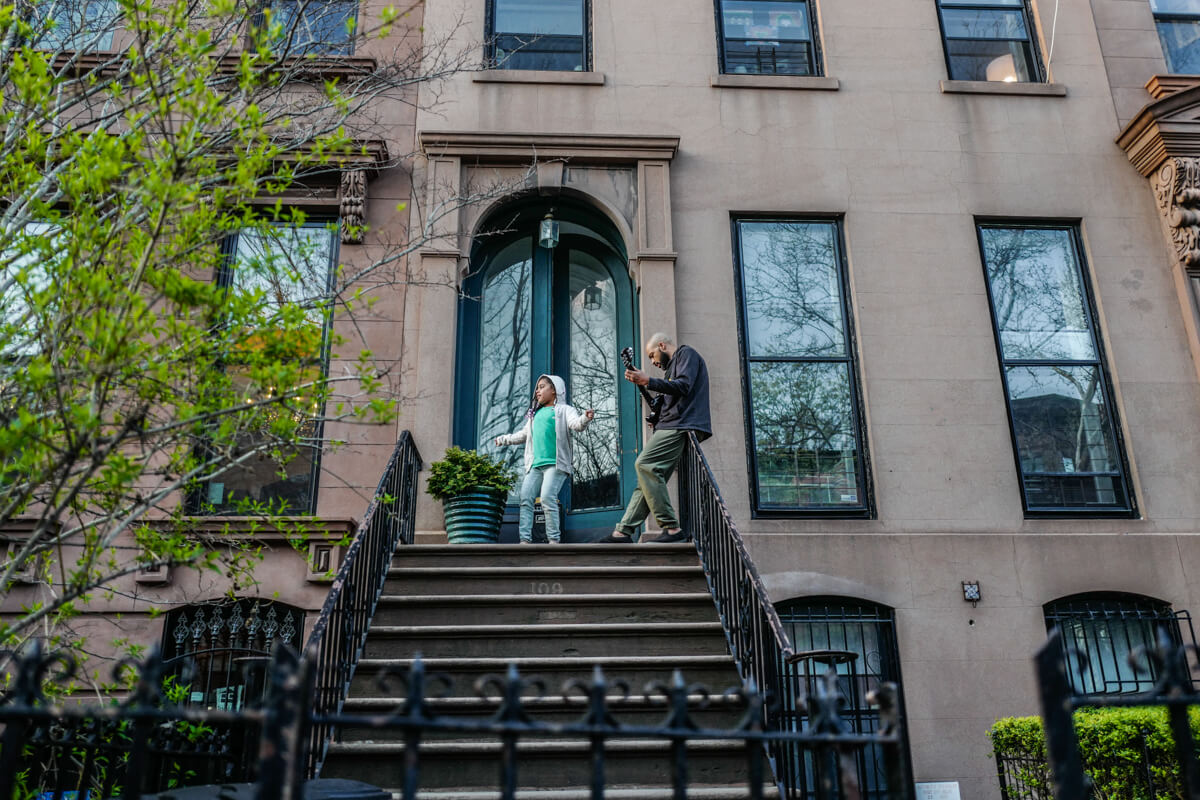
Has anything surprising happened when you were shooting this series?
Yes, it has, because even if I am behind the camera I connect with the people I photograph. I have met people I keep seeing when I am in the neighborhood. I have talked to a violinist who worked at la Fenice Theater in Venice — he was having a glass of rosé with his friends on the stoop on Hoyt — that exchange made me travel back to my homeland in an instant. I have discussed botany with a woman whose stoop had fascinated me for weeks because it seems the setting of a fairy tale, and I had wondered about who she might be. I have shared with my Italian relatives the image of Easter Sunday and chuckled at their surprise that one could have that one meal on the street and not as a multi-course elaborate pranzo. I have met an actor who I keep seeing at the windowsill who later told me that space has helped him to feel less alone and useless in regards to neighbors who might be more affected by the pandemic and that he uses that position “to share resources, share info, or at least share a smile.”
How have you been affected by the virus? How has your routine changed? Or your life altered in other ways?
The virus makes me be more aware of contact that I used to take for granted. I feel more separate from people but at the same time the acknowledgement of a communal respected mutual boundary is somehow making the process of relating to a stranger more mindful and therefore potentially more meaningful.
As a writer and photographer who is outside most of the time my routine changed when I stopped relying on the train for moving around to different neighborhoods and on cafés for taking a break during the day to eat a snack, work on my computer, use the bathroom or charge my phone. Early on I was affected by the virus in terms of fear and incertitude, as my friends and my brother caught it when we still did not know much about it. The perception of the progression of the virus was very peculiar for me because for weeks before it spread here I was reading in depth about the tragic effects of the contagion in Italy where one of the first two clusters of the disease was in Vo’, near Padua, my hometown.
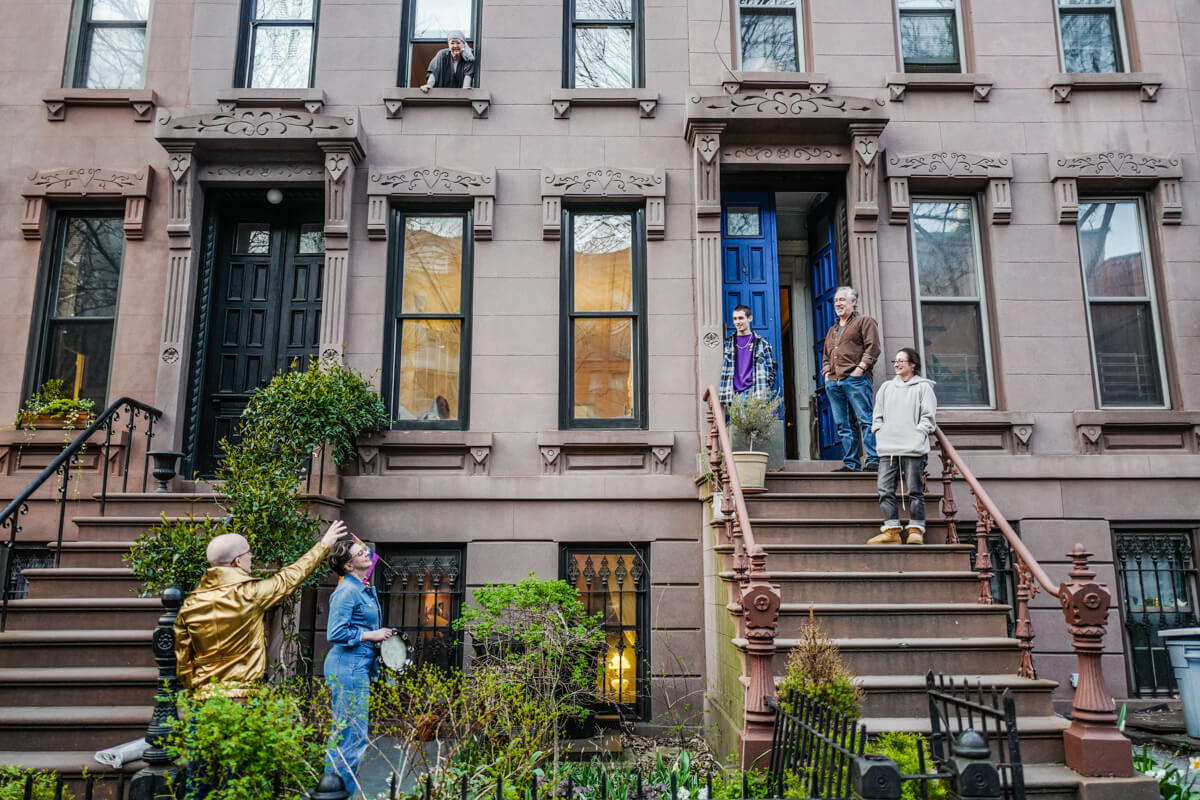
How do you think coronavirus is affecting Brooklyn? Do you see any changes you think will become permanent as a result of the virus?
Aside from the stoop project, and for many years now, I have photographed and known the people of Brooklyn and New York City and I can say they have a particular style in coping with reality, dealing with situations, reacting to unfathomable tragedy (I was here during 9/11 and hurricane Sandy) and I am sure Brooklyn will find its unique resilient and creative way to deal with the aftermath of the pandemic. I guess relating to strangers and behavior in public places has changed forever and I am curious to see the direction it will take here and elsewhere.
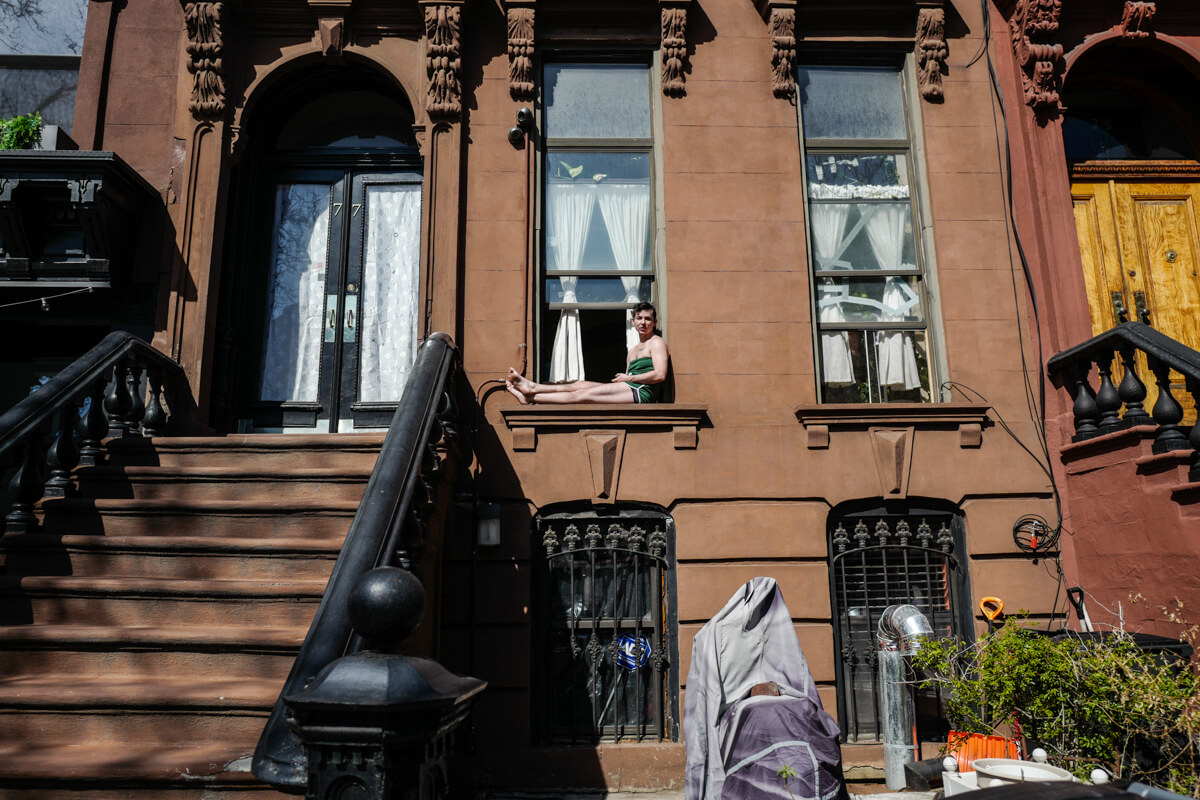
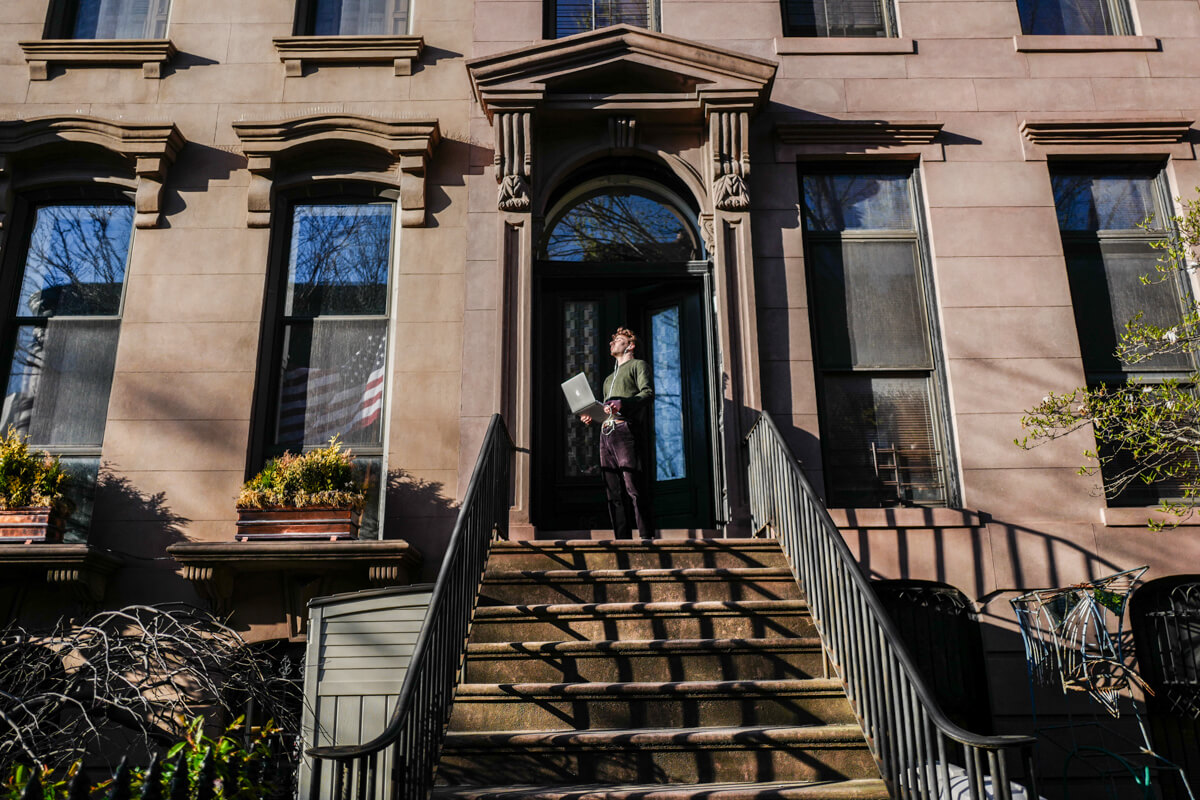
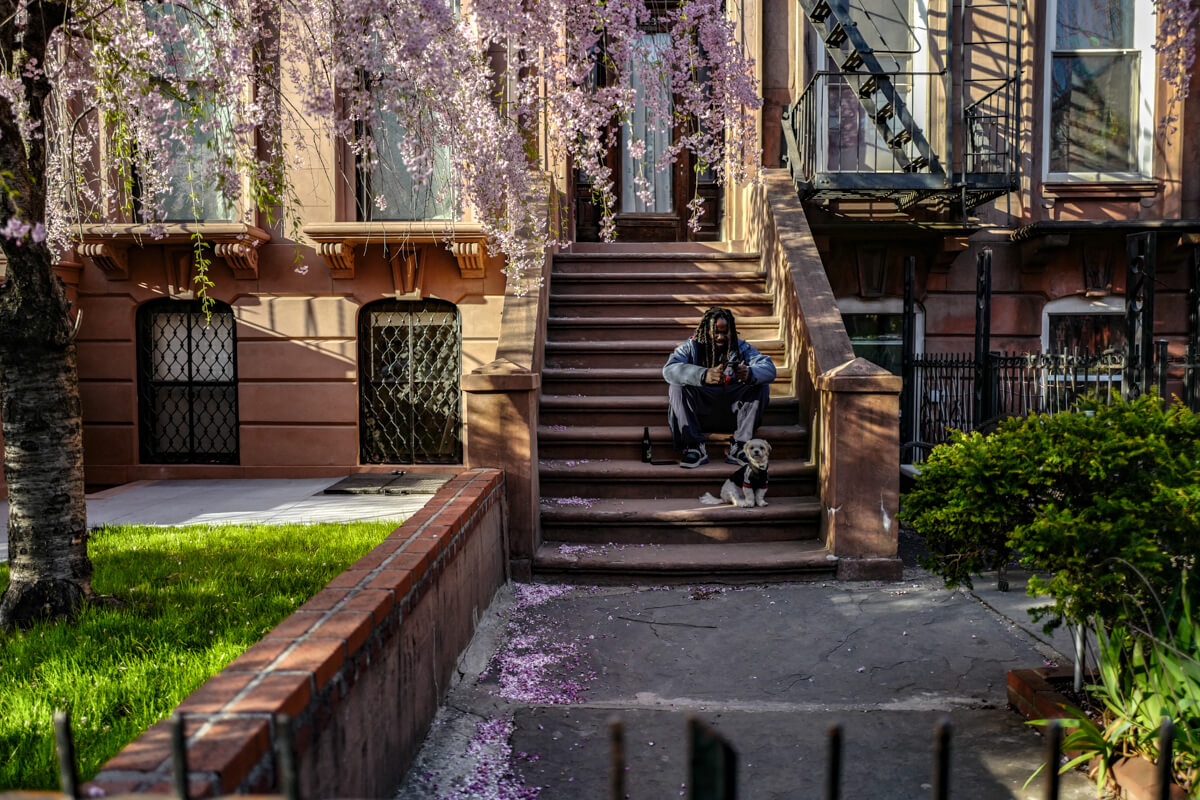
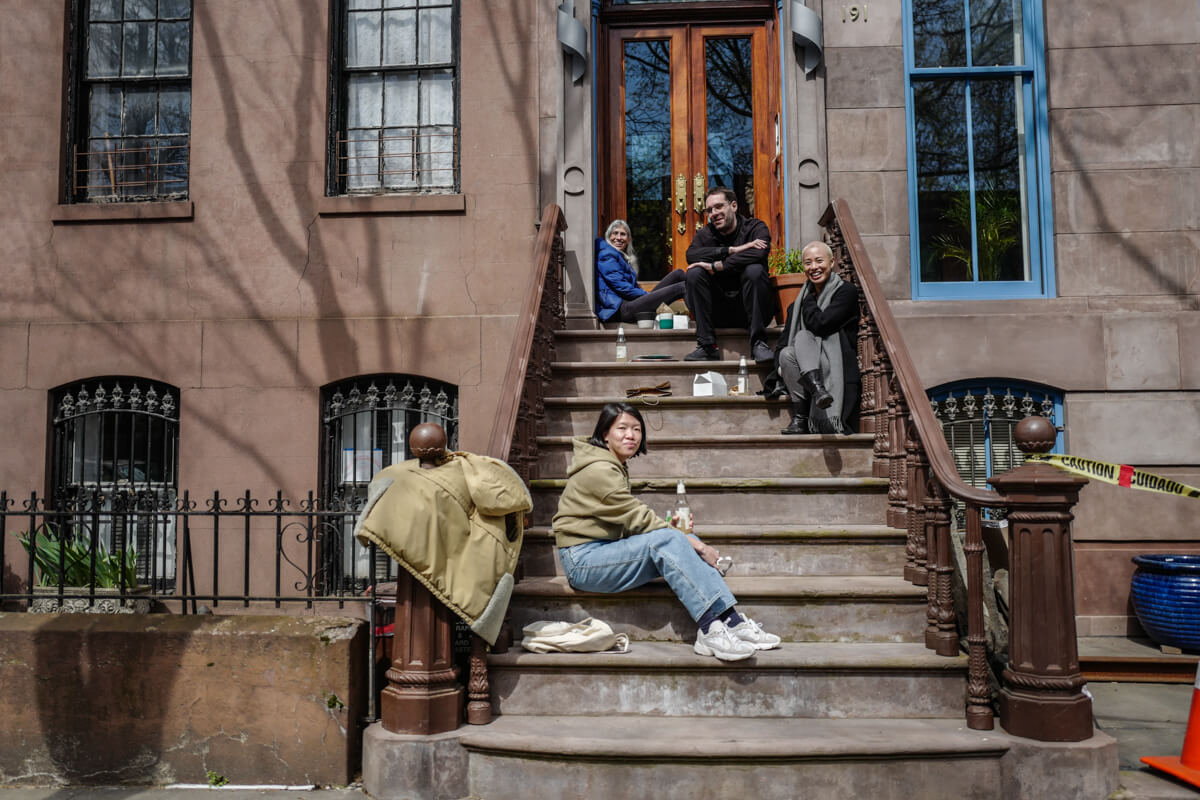
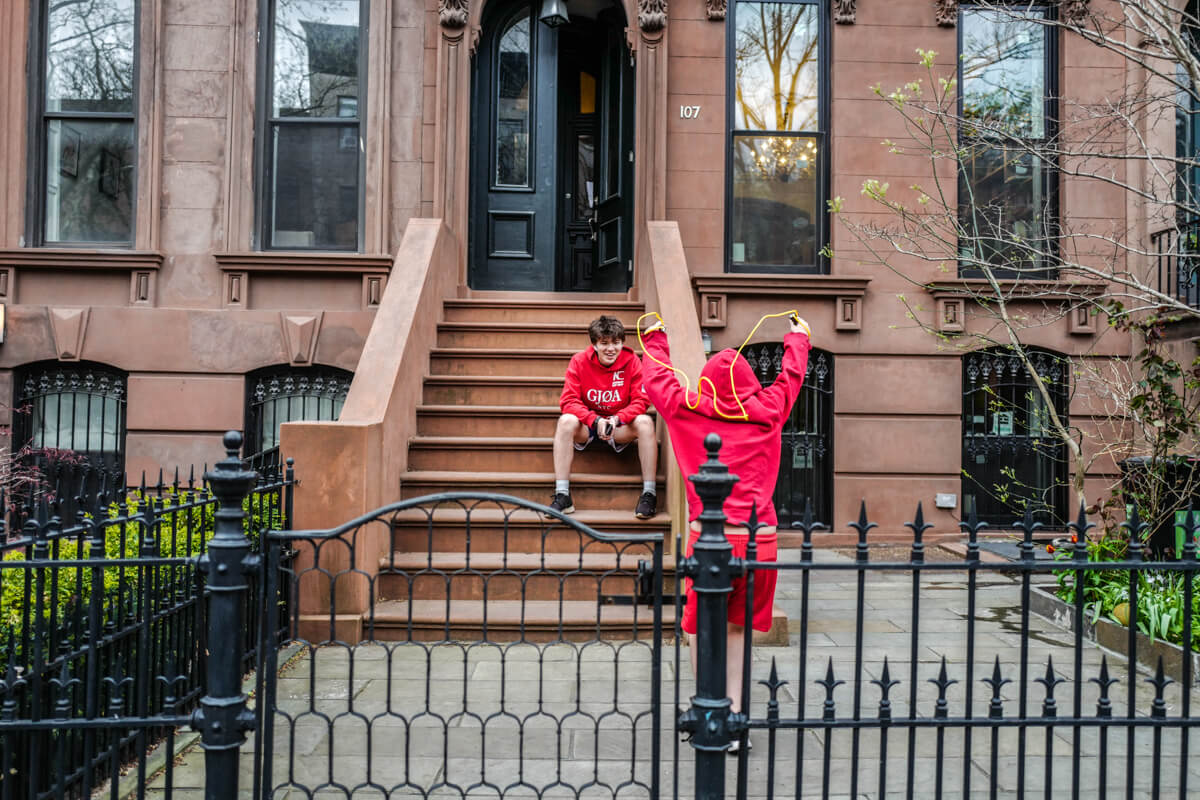
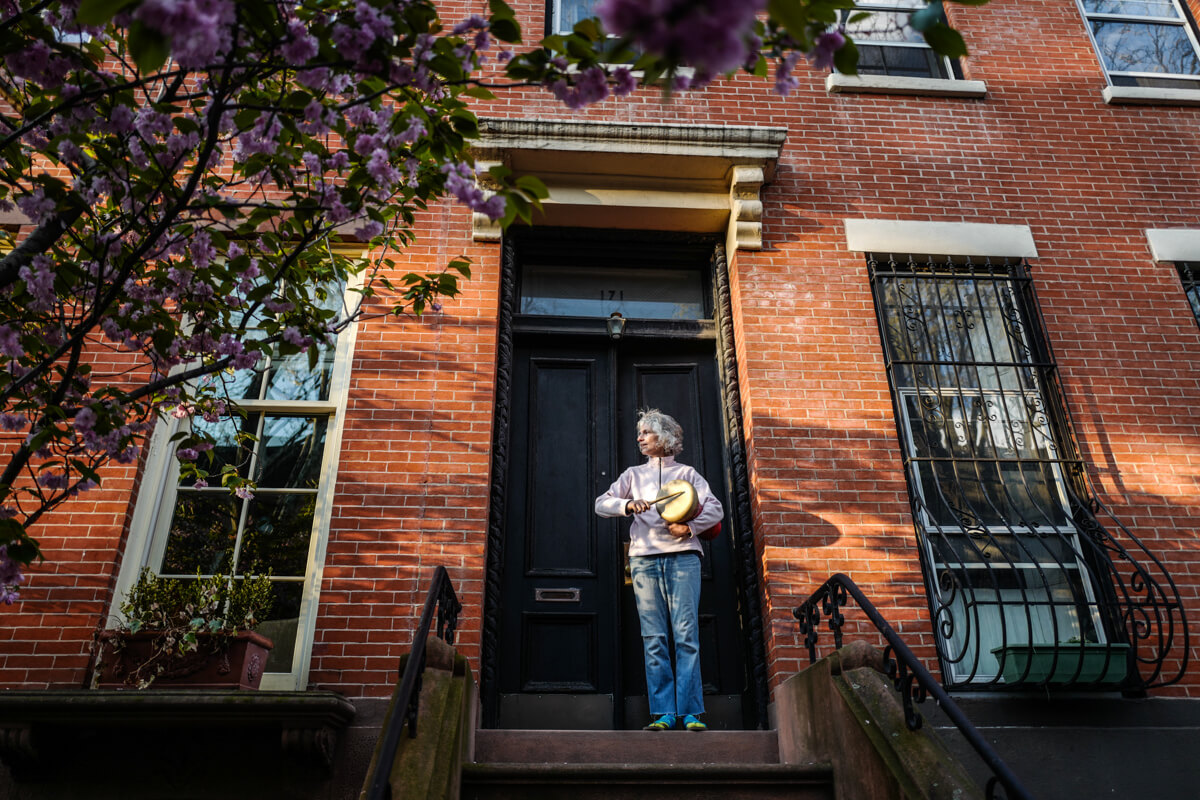
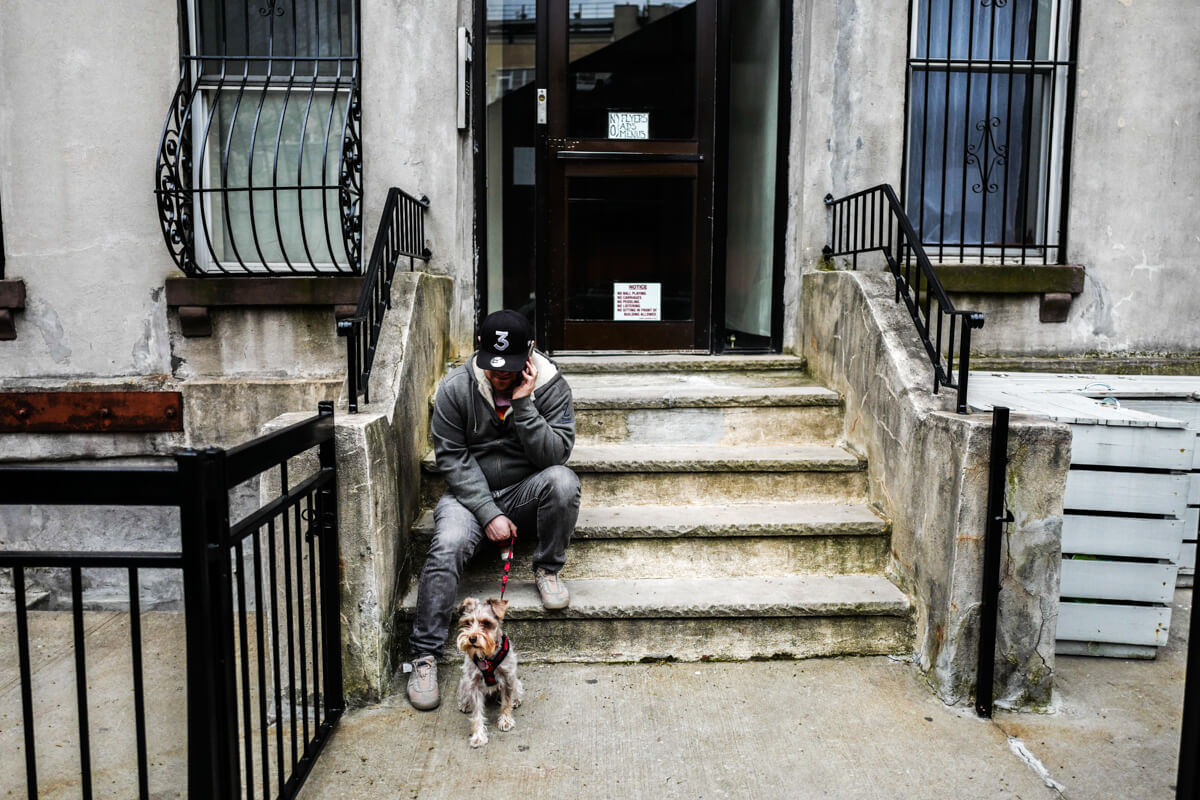
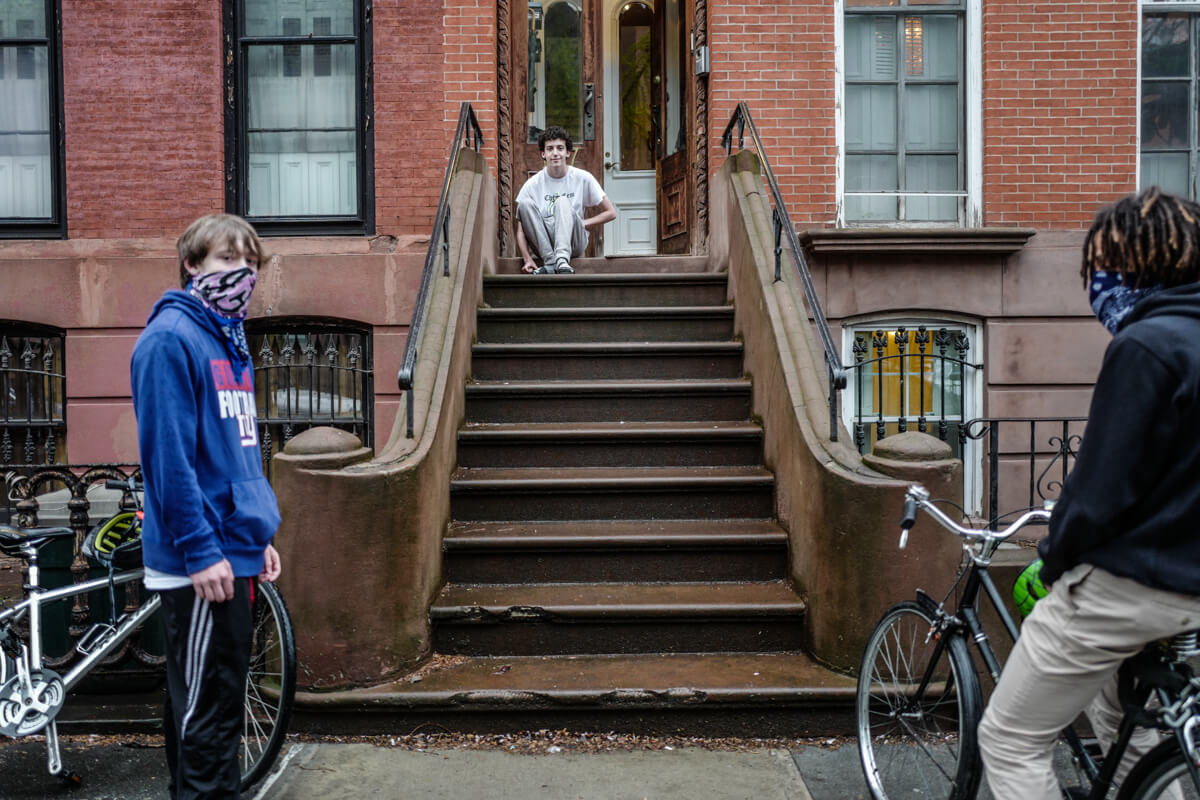
[Photos by Francesca Magnani]
Related Stories
- The Insider: Prospect Heights Brownstone Restored, Updated with Italian Modern Kitchen
- Brooklynites Share Message of Thanks and Hope on Stoops and Windows (Photos)
- Walkabout: Stoop Sittin’
Sign up for amNY’s COVID-19 newsletter to stay up to date on the latest coronavirus news throughout New York City. Email tips@brownstoner.com with further comments, questions or tips. Follow Brownstoner on Twitter and Instagram, and like us on Facebook.

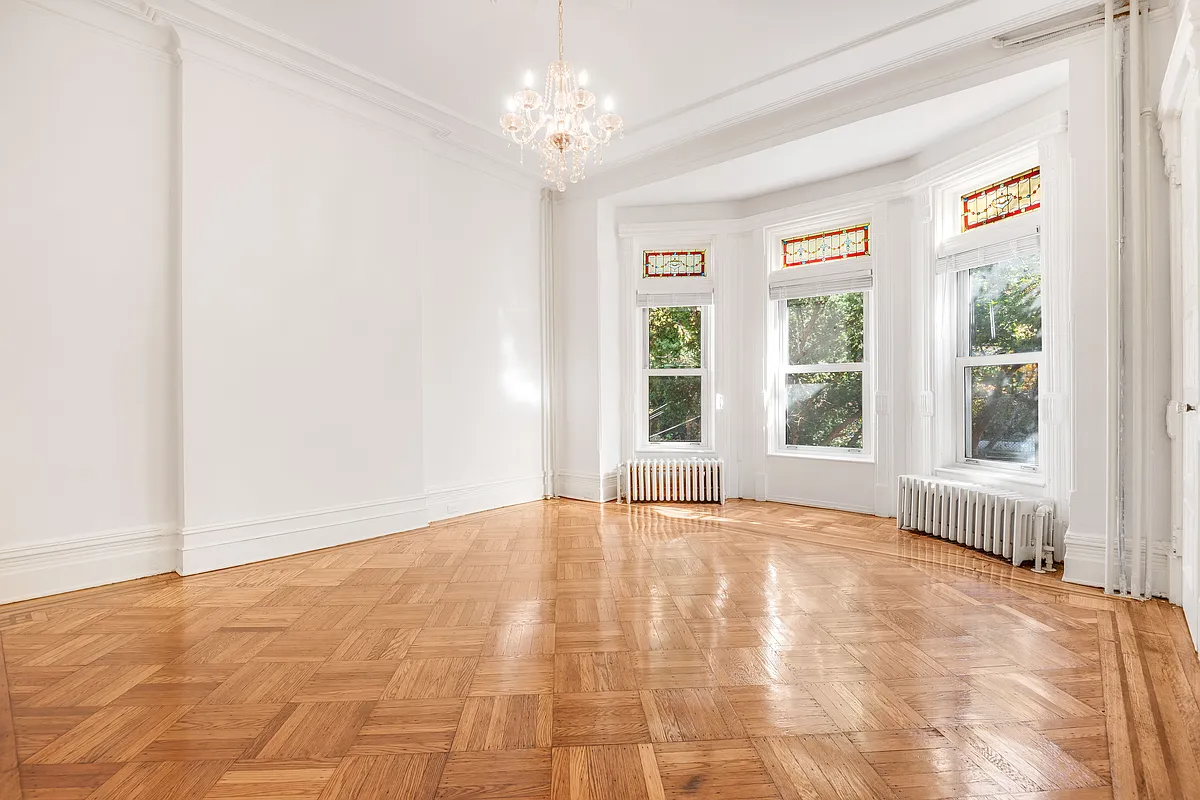







What's Your Take? Leave a Comment